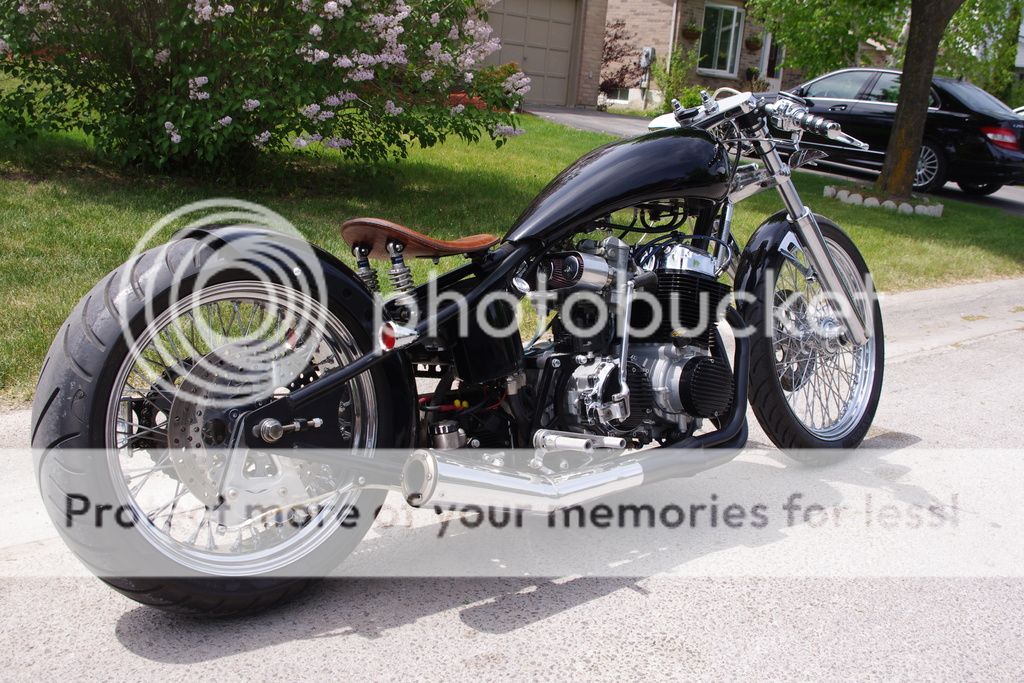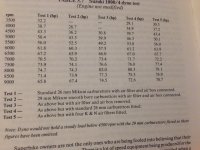cqyqte
Grumpy retired oldtimer... "eat a Snickers bar"
90% of the reason Air Pods or individual filters on each carburator don't work is the non-laminar air flow they allow or create through the carburator body/venturi. Air pods sit open to the environment, dynamic air, flowing past the irregular shape of the bike and the rider causing turbulence and vortex's. As the down stroke of the piston causes air to be drawn into the carb through the air filter. In the case of the stock air box the air is sucked in through a common air filter and then down stacks into the individual carbs. The common filter and collection box calms the air and eliminates much of the turbulent outside environment. Any remaining disruption is smoothed out by the velocity stack as it approaches the carb throat, as depicted in this first primitive drawing.

When you remove the OEM air box and place Air Pods on each carb, the draw of air is pretty much from any where on the pod. And with the pod sitting in dynamic environment the pod is very vulnerable to the turbulences and vortex currents, in other words the air being drawn in is not very calm. And because of it not being calm or smooth the air flow through the carb throat is not consistant. You can see again in this drawing what I mean...

Now this is very important, why? The carb is a metering device providing a control air/fuel mixture to each cylinder. The amount of fuel is controlled by a jet which controls by it's position a determined amount of fuel to flow, inactual fact to be sucked up through the jet by the flow of laminar air flowing over the jet. If the flow over the jet is turbulent or inconsistant the amount of fuel is affected drastically. The stack in the OEM air box and the air box itself allows for a smooth flow of air over the jet. And in the Air Pod diagram you can see that the flow is all over the map coming from all angles creating a turbulent situation.
Don't give up because there are ways to be successful using the Air pods. If you create a simple stack inside the individual Air Pod you can reduce the disruption and produce a quieter more laminar flow. Effectively you are still using the same surface area of the filter, you are just not letting the air to enter the throat of the carb at right angles at the edge of the carb horn. In fact you are forcing the air to have to flow into the carb throat at the open end of your simple stack at a point further away from the jet allowing for the flow to smooth out and become more laminar before it passes over the jet openning. You can see this in this last diagram...

Now this will improve your chances at finally tuning your bike to function the way it did with the stock OEM air box. I chose to use an external shroud over the four carbs which essentially achieved the same affect as four individual internal stacks. Yes there will be the nay sayers that will argue the theory or the validity of what I say, but I have tuned many a bike from single to duals to quad carbed bikes and never had to give up on Pod filters.


When you remove the OEM air box and place Air Pods on each carb, the draw of air is pretty much from any where on the pod. And with the pod sitting in dynamic environment the pod is very vulnerable to the turbulences and vortex currents, in other words the air being drawn in is not very calm. And because of it not being calm or smooth the air flow through the carb throat is not consistant. You can see again in this drawing what I mean...

Now this is very important, why? The carb is a metering device providing a control air/fuel mixture to each cylinder. The amount of fuel is controlled by a jet which controls by it's position a determined amount of fuel to flow, inactual fact to be sucked up through the jet by the flow of laminar air flowing over the jet. If the flow over the jet is turbulent or inconsistant the amount of fuel is affected drastically. The stack in the OEM air box and the air box itself allows for a smooth flow of air over the jet. And in the Air Pod diagram you can see that the flow is all over the map coming from all angles creating a turbulent situation.
Don't give up because there are ways to be successful using the Air pods. If you create a simple stack inside the individual Air Pod you can reduce the disruption and produce a quieter more laminar flow. Effectively you are still using the same surface area of the filter, you are just not letting the air to enter the throat of the carb at right angles at the edge of the carb horn. In fact you are forcing the air to have to flow into the carb throat at the open end of your simple stack at a point further away from the jet allowing for the flow to smooth out and become more laminar before it passes over the jet openning. You can see this in this last diagram...

Now this will improve your chances at finally tuning your bike to function the way it did with the stock OEM air box. I chose to use an external shroud over the four carbs which essentially achieved the same affect as four individual internal stacks. Yes there will be the nay sayers that will argue the theory or the validity of what I say, but I have tuned many a bike from single to duals to quad carbed bikes and never had to give up on Pod filters.







